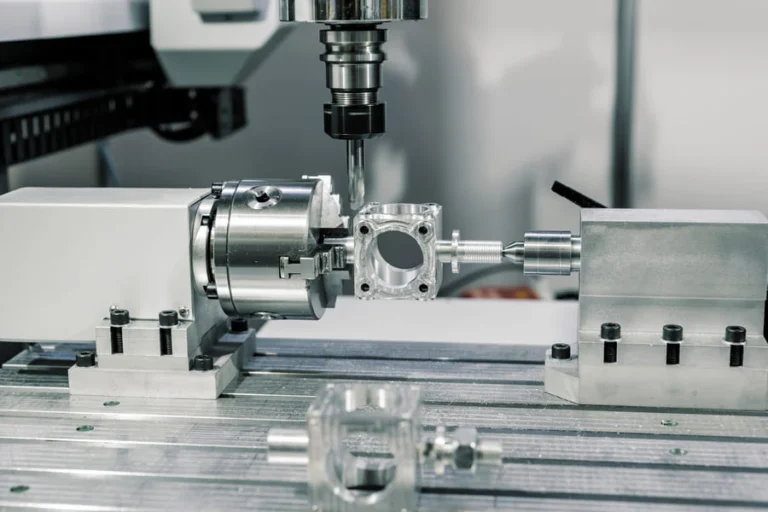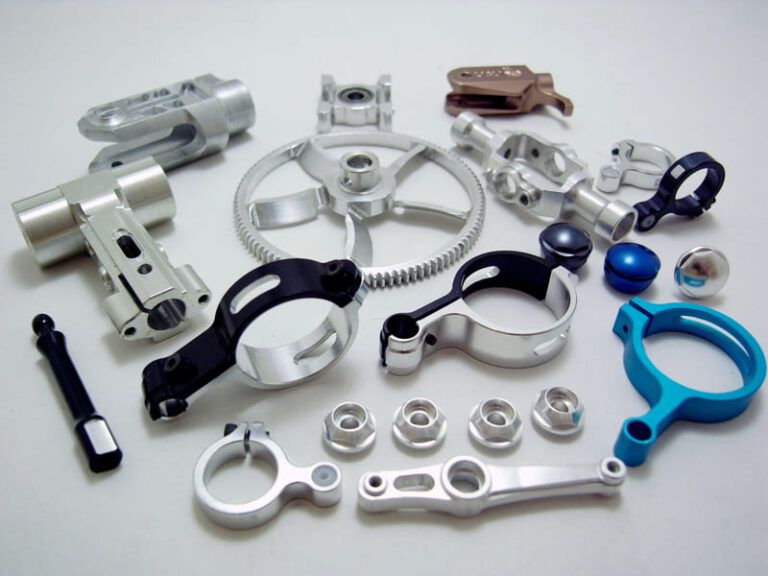In a world where everything is becoming automated, it’s not hard to see why manufacturing and production processes are moving towards more precision-based workflows.
In this guide, we’ll explore everything there is to know about CNC precision machining – from what it is, to the various applications it can be used for, and how you can get started with your CNC machine. Buckle up – the world of CNC precision machining is a fascinating one!
What is CNC Precision Machining?
CNC precision machining uses computer-controlled tools to create parts very precisely. The term “CNC” stands for “computer numerical control,” referring to the fact that a computer program operates the tool.
This program is used to input the desired dimensions of the part and the tolerances that must be met. The computer then controls the tool to cut the piece to the specified size and shape.
In recent years, the technology has become increasingly affordable, making it accessible to small businesses and hobbyists.
Types of Precision Machine Tools
Here below are the most popular precision machine tools:
CNC Lathes and Turning Machines
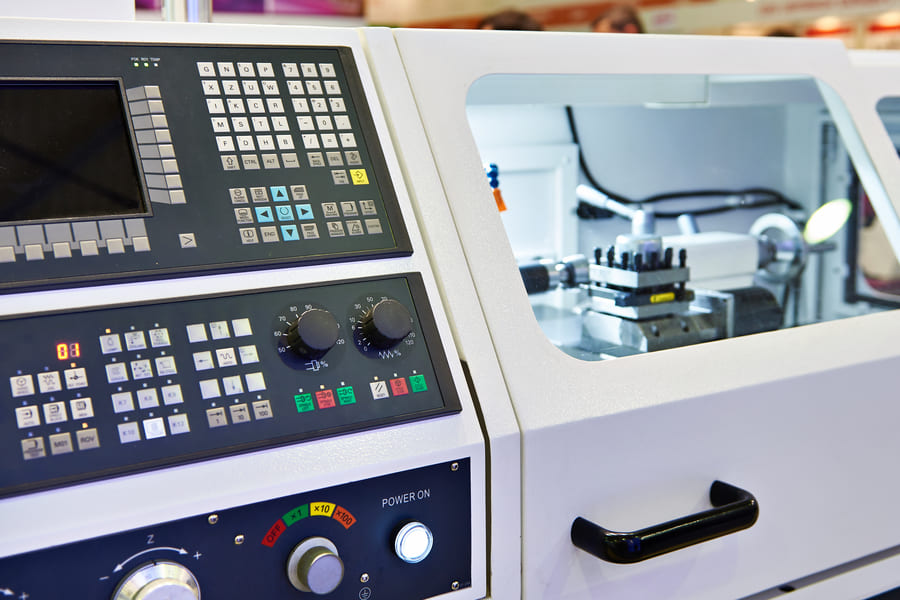
CNC lathes and CNC turning machines are some of the most versatile tools in a machine shop. These computer-controlled devices can create exact and intricate designs, making them ideal for projects requiring high accuracy.
In addition, CNC lathes and CNC turning machines can be programmed to perform various operations, including drilling, tapping, reaming, and counterboring. As a result, these CNC machines can complete projects from start to finish with little or no human intervention.
CNC Milling Machines
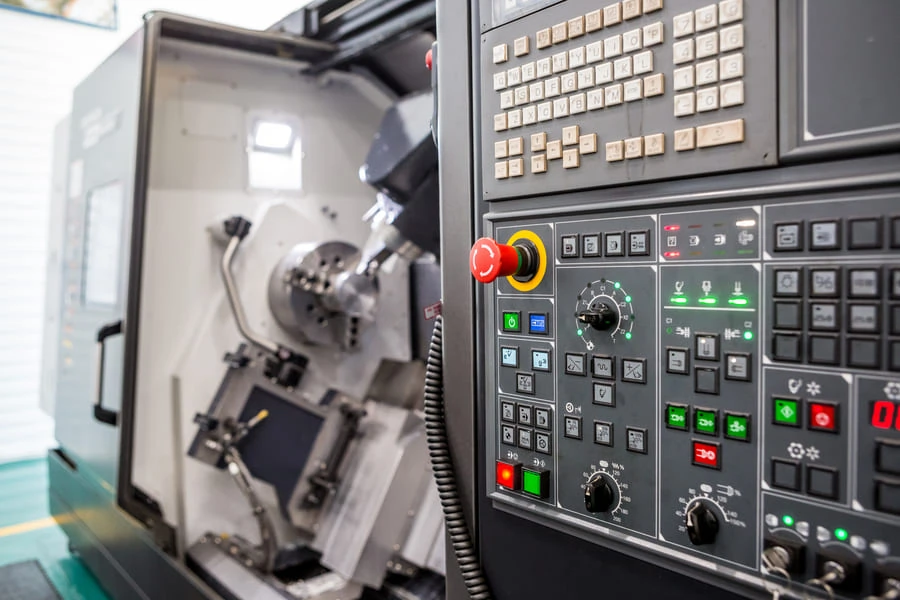
The machine consists of a bed, a spindle, and a table that support the workpiece and move it in various directions. The spindle is the part of the machine that holds and rotates the cutting tool, and the table supports the workpiece during machining.
The cutting tool is also sometimes called a “router bit.” CNC milling can create complex conditions with a high degree of accuracy.
Electrical Discharge Machines
Electrical Discharge Machines(EDM) are typically composed of three major parts: the power supply, the controller, and the mechanical portion. The power supply provides the electrical current used to erode the metal, while the controller regulates the flow of electricity.
The mechanical part of the machine includes the electrodes, which are used to deliver the current to the workpiece, and a table that holds the workpiece in place.
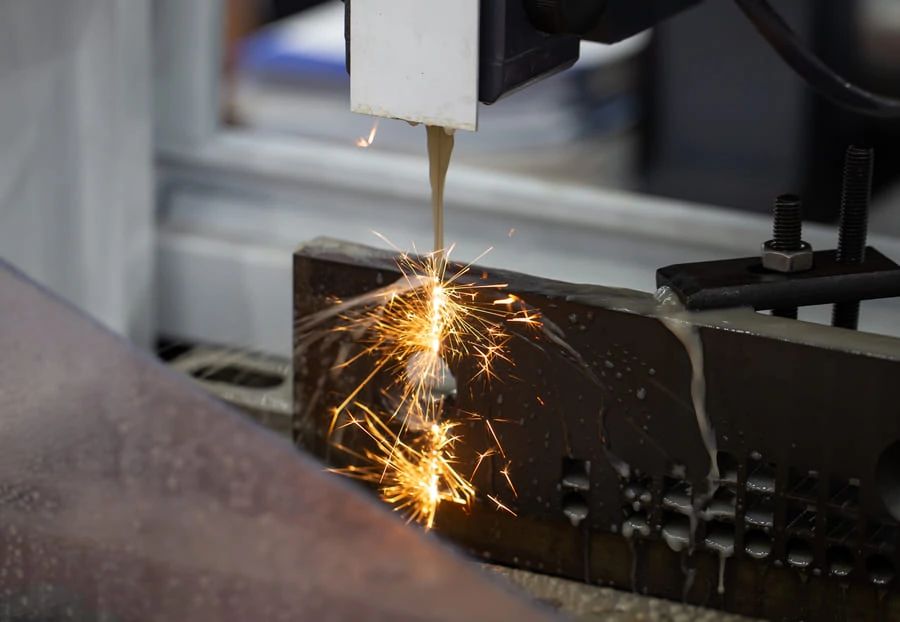
EDM machines can cut any metal, including hardened steel. The process works using a negatively charged electrode to erode the metal slowly. As the electrode moves closer to the workpiece, more current is required to maintain the same erosion rate. The procedure goes on until the best shape is obtained.
CNC Plasma Machines
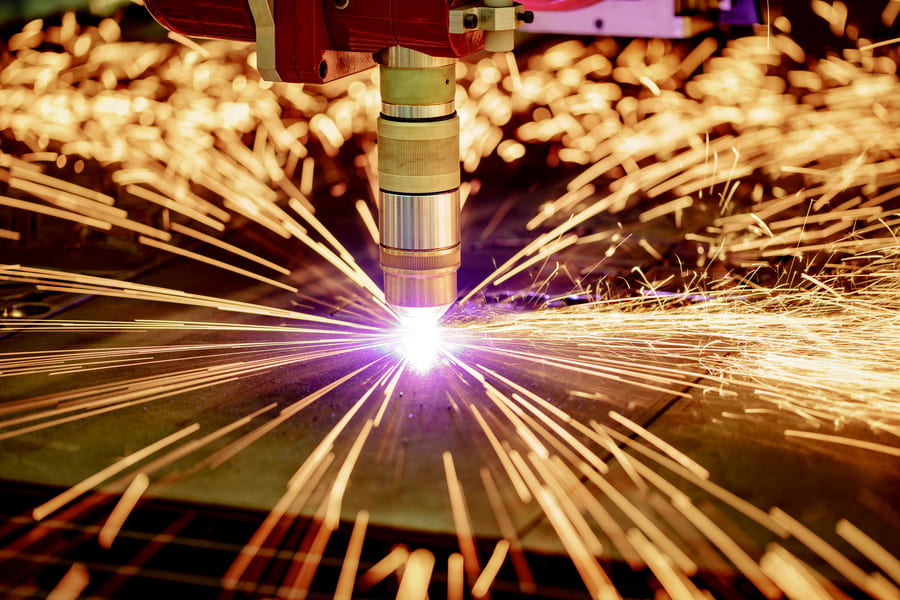
This machine is comprised of three essential elements: the cutting table, the computer unit, and the plasma torch. The plasma torch is a device that creates a jet of hot plasma, which is used to cut through the metal.
The cutting table is a flat surface on which the metal is placed, and the computer control unit controls the movement of the plasma torch.
The user first inputs the desired cutting design into the computer control unit to operate the machine. The computer moves the plasma torch according to the invention, and the plasma cuts through the metal.
CNC Laser Machines
The cutting process is performed by a powerful laser beam directed at the material to be cut. The laser beam is generated by a laser system consisting of a laser source, an optical system, and a control system.
The laser source produces a beam of high-energy laser light. The optical system focuses the laser beam onto the material’s surface to be cut.
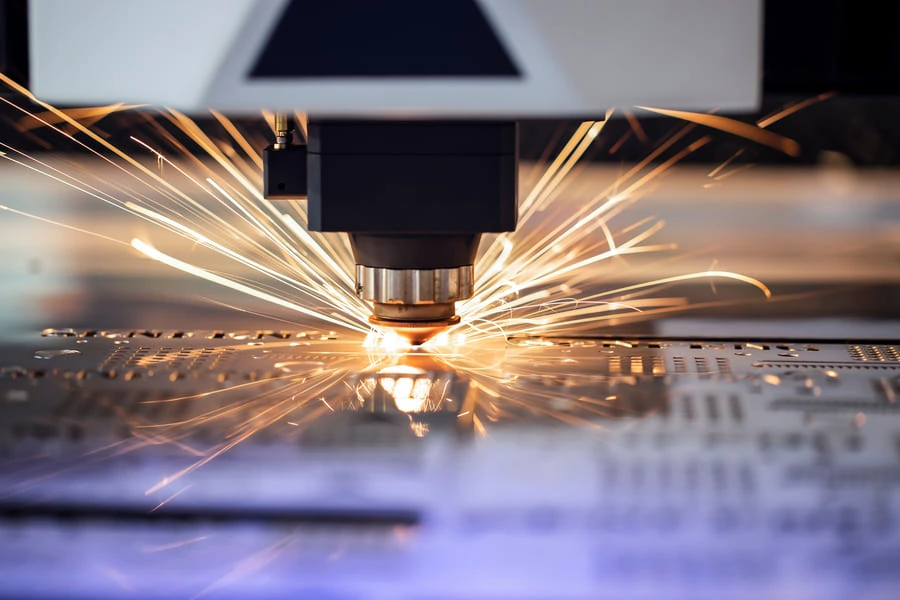
The control system controls the laser beam’s movement and regulates the laser’s power. As the laser beam cuts through the material, it melts, vaporizes, or burns away the fabric, leaving behind a clean edge.
CNC Waterjet Machine
It has a nozzle, pump, and cutting table. The pump creates a high-pressure stream of water directed through the nozzle. The cutting table is made of a material resistant to the abrasive action of high-pressure water.
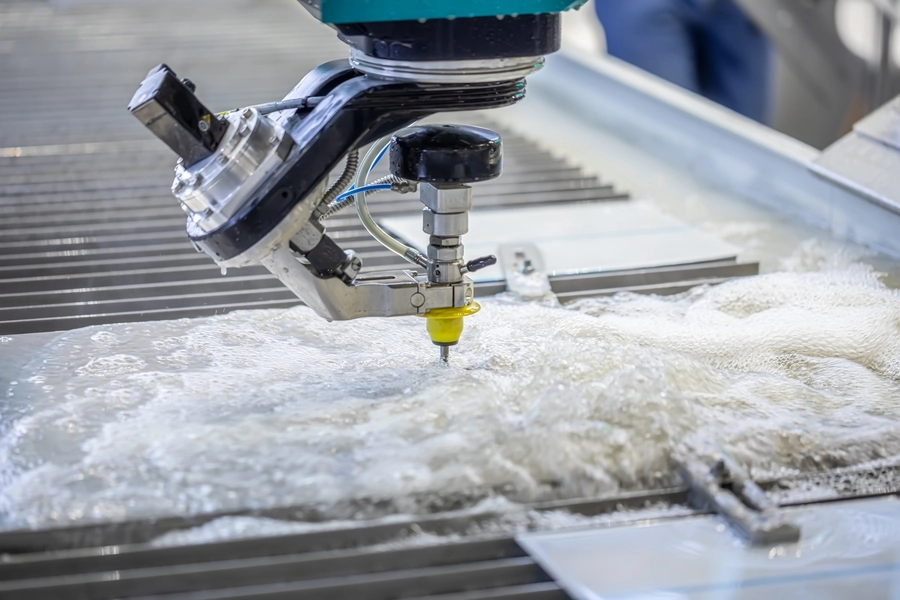
The table holds the material to be cut and guides the movement of the nozzle. A computer controls the machine, calculates the nozzle’s path, and prevents the table’s direction.
Waterjet cutting machines can cut various materials, including metals, stone, glass, and plastics.
CNC Grinder
The machine consists of three main components:
- A bed where the workpiece is mounted.
- A spindle holds the grinding wheel.
- A controller which input commands from a computer.
The operator inputs the desired shape into the computer to create a design. The controller then uses this information to direct the spindle in the appropriate directions, gently removing material from the workpiece until the desired shape is achieved.
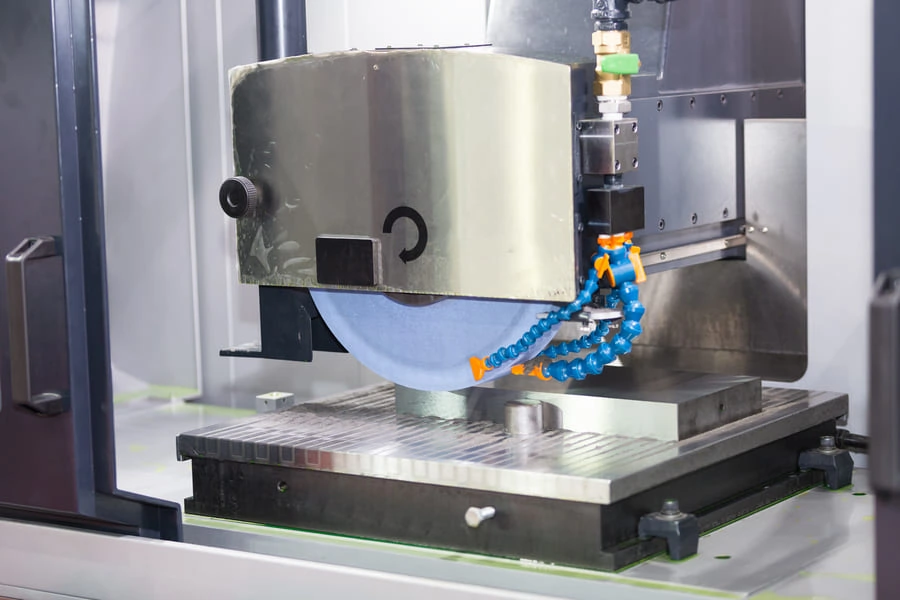
In addition to being faster and more accurate than traditional methods, CNC grinding also allows for greater flexibility in design, making it an essential tool for any machinist or fabricator.
Materials for CNC Precision Machining
When selecting materials for CNC precision machining, it is essential to consider the specific requirements of each application.
For example, complex and wear-resistant materials may be required for applications that involve frequent contact with other materials. In addition, strong and stiff materials may be needed in applications with high loads or stress.
Precision CNC machining sometimes uses the following materials:
Steel
Steel is essential in many industries, including construction, manufacturing, and precision CNC machining. It is prized for its strength, durability, and resistance to wear and tear. Steel combines iron and carbon, creating a solid and pliable material.
Steel is often used for framing, beams, and other structural elements. Manufacturing companies use steel to create various products, from automobiles to appliances. And CNC machining shops rely on steel machining for multiple projects, from creating prototypes to fabricating parts for production runs.
Stainless Steel
Regarding precision machining, stainless steel is one of the most popular materials. There are several reasons for this, including the fact that it is solid and durable. It is also resistant to corrosion, making it ideal for applications exposed to harsh chemicals or other corrosive substances.
Not only does stainless steel have a high melting point, but it also is resistant to rust and corrosion. Because of these two properties, it can withstand precision CNC machining processes that require high temperatures. Thus, making it a versatile material used in many different applications that require stainless steel precision machining.
Aluminum
Aluminum is a popular choice for use in precision CNC machining. There are several reasons why aluminum is an ideal material for precision CNC machining. First, aluminum is strong yet lightweight, making it easy to work with.
It is resistant to corrosion, meaning it will not rust or deteriorate over time. It is a good conductor of electricity, making it ideal for electrical applications.
Finally, aluminum can be easily recycled, making it an environmentally friendly choice. All these factors make aluminum CNC machining an ideal choice.
Brass
Brass is a material that has been used in precision machining for centuries. It is an alloy of copper and zinc, and it has a wide range of properties that make it ideal for precision CNC machining. Brass is strong and durable yet soft enough to work efficiently.
It is also highly resistant to corrosion, making machining brass a good choice for applications. In addition, brass has a low melting point, which makes it easy to work with.
Copper
Copper is popular for precision CNC machining because it is solid yet ductile and can withstand high stresses without shattering. In addition, copper is an excellent conductor of heat and electricity, making it ideal for applications where these properties are essential.
Copper is also relatively easy to machine, which helps to keep production costs down. When precision machining copper, it is necessary to use sharp tools and coolants to avoid damaging the material. With proper care, machining copper can be an excellent choice for industrial applications.
Titanium
Titanium is non-magnetic, meaning that it will not interact with the magnetic fields generated by CNC machines. This allows for more precision machining, as well as eliminating the risk of damaging sensitive electronic components.
It is also non-sparking and corrosion-resistant, making titanium machining parts an ideal choice for parts in exposed environments where sparks or corrosion could be a safety hazard.
Benefits of Precision Machining
There are several benefits to using high-precision machining for CNC fabrication. These benefits include:
Low Error:
High-precision machining converts raw materials into parts with less error than traditional methods. This helps reduce the cost of production and also reduces waste.
Less Material Waste:
High-precision machining requires less material than traditional methods. This helps reduce the cost of production, as well as the environmental impact of manufacturing.
High-Quality Parts:
Because of the exact movements made possible by CNC machines, parts produced through this process are of higher quality and accuracy than parts produced with manual machining.
Faster Turnaround Times:
Precision CNC machining can reduce the amount of human labor and machine time involved in a project, leading to faster production speeds. Automation also allows for shorter cycle times and repeatable operations, which can help speed up the production process even more.
Increased Durability:
High-precision machining produces parts that are more durable than traditional methods. This helps increase the lifespan of components and reduce maintenance costs.
Industrial Applications for CNC Precision Machining
The primary applications of CNC precision machining include:
Aerospace
The technology can create anything from small components to sizeable structural aerospace parts. In addition, computer-aided design (CAD) software enables the design of intricate aircraft engines.
They can produce parts with tight tolerances, which is essential for ensuring aircraft safety. CNC precision machining can also create complex shapes such as turbine blades, engine components, landing gear parts, and other aircraft structures.
Automotive
Precision CNC machining is used extensively in the automotive industry to produce engine parts, suspension components, and body panels. The high degree of accuracy and repeatability offered by CNC machining makes it possible to produce parts that meet the demanding requirements of the automotive sector. In addition, the flexibility of CNC machining means that components can be quickly assembled in small or large batches, as required. As a result, CNC machining is vital in ensuring that the automotive industry can keep up with demand.
Medical
CNC precision machining parts are essential to modern medicine, from dental implants to prosthetic limbs and pacemakers to artificial hearts.
The precision and accuracy required in medical applications are often much higher than in other industries, making CNC precision machining an essential technology. In addition, many medical devices must withstand repeated sterilization, which can quickly degrade traditional manufacturing methods.
CNC precision machining offers a much more durable solution that can withstand repeated sterilization without compromising accuracy or precision. As a result, CNC machining is likely to play an even more critical role in the medical field in the future.
Electronic
Precision CNC machining is also used in the production of electronic components. CNC machining can produce parts with high accuracy and repeatability, from complex circuit boards to tiny microchips. This makes the technology particularly well-suited to the production of complex electronic components.
In addition, CNC machining can produce parts with a high level of detail and accuracy.
Telecommunications
In telecommunications,Precision CNC machining produces components such as antennas and satellite dishes. The high accuracy and repeatability of CNC machining make it possible to produce parts for these applications with high precision.
Why Choose Us for CNC Precision Machining?
Sindparts specialize in providing high-quality, precision-machined parts with tight tolerances for various industries. They use the latest CNC precision machining technology, enforce strict quality control, and adhere to a responsible service attitude to ensure that all parts meet the highest standards of quality and accuracy.
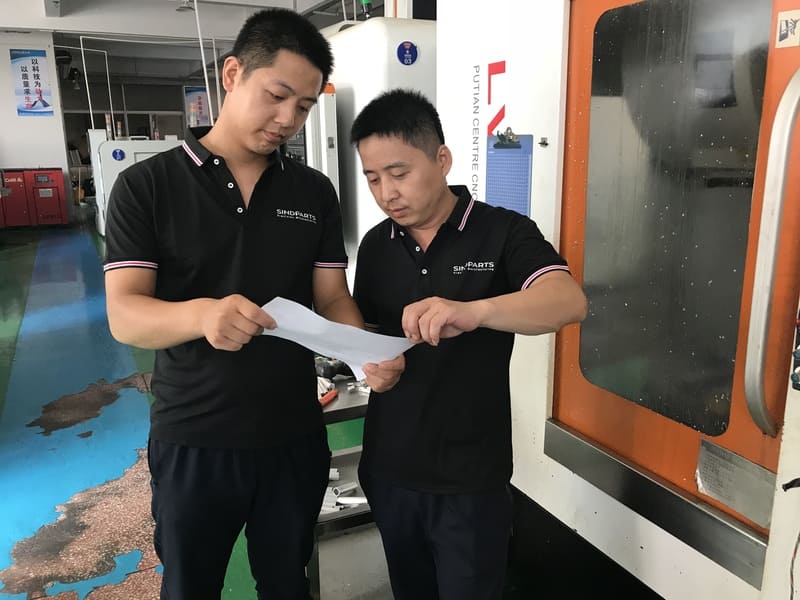
Sindparts have extensive experience providing components for applications in the aerospace, automotive, medical, electronic, and telecommunications industries. They are dedicated to providing superior customer service and fast turnaround times, so you can rely on them to get the job done quickly and efficiently.
FAQs
Is precision CNC Machining Accurate?
Yes, precision CNC machining is highly accurate. The high precision and repeatability of precision machining make it possible to produce parts with tight tolerances and detail.
What kind of Tolerance can You Guarantee?
In general, the tolerance of precision turning machining can reach +-0.005 mm, and the tolerance of precision milling machining can reach +-0.01 mm.
ISO 2768-mK will be used unless otherwise specified.
What Are the Costs of CNC precision Machining?
The cost of precision CNC machining depends on several factors, including the complexity of the part and the type of material used. Generally speaking, precision machining costs can range from a few hundred dollars for small components to thousands of dollars for more important details.

